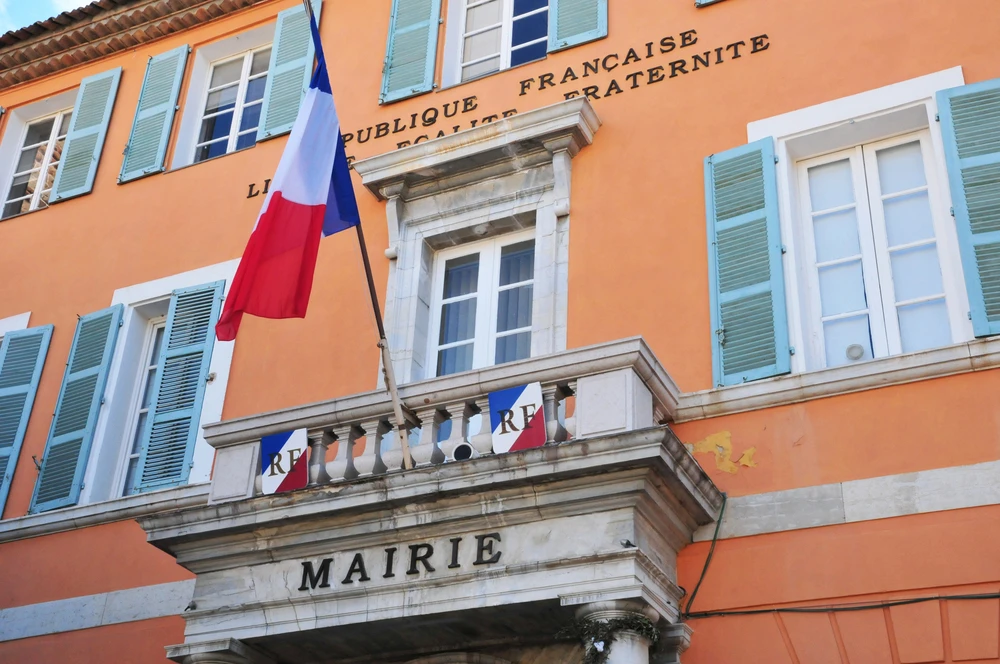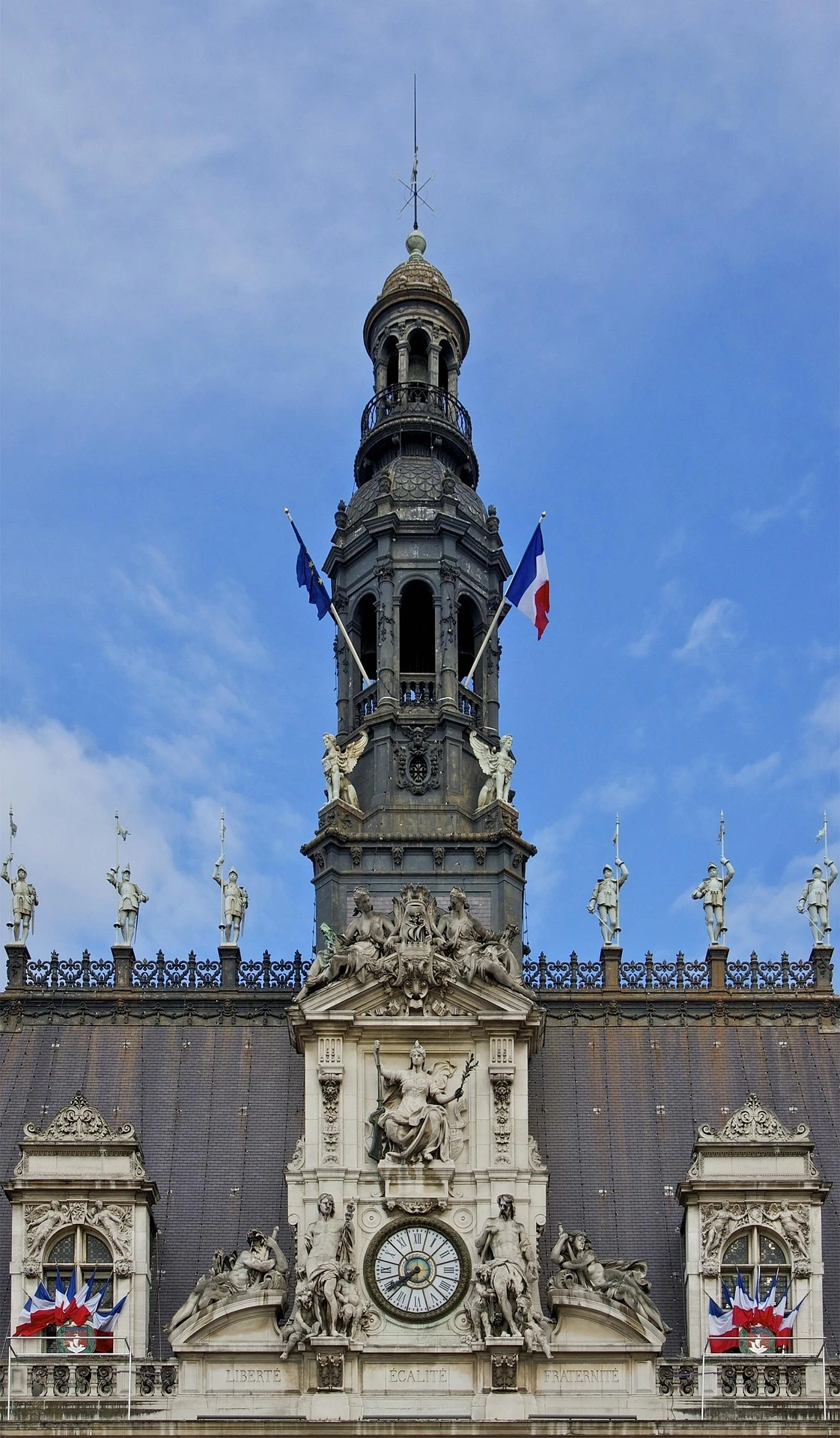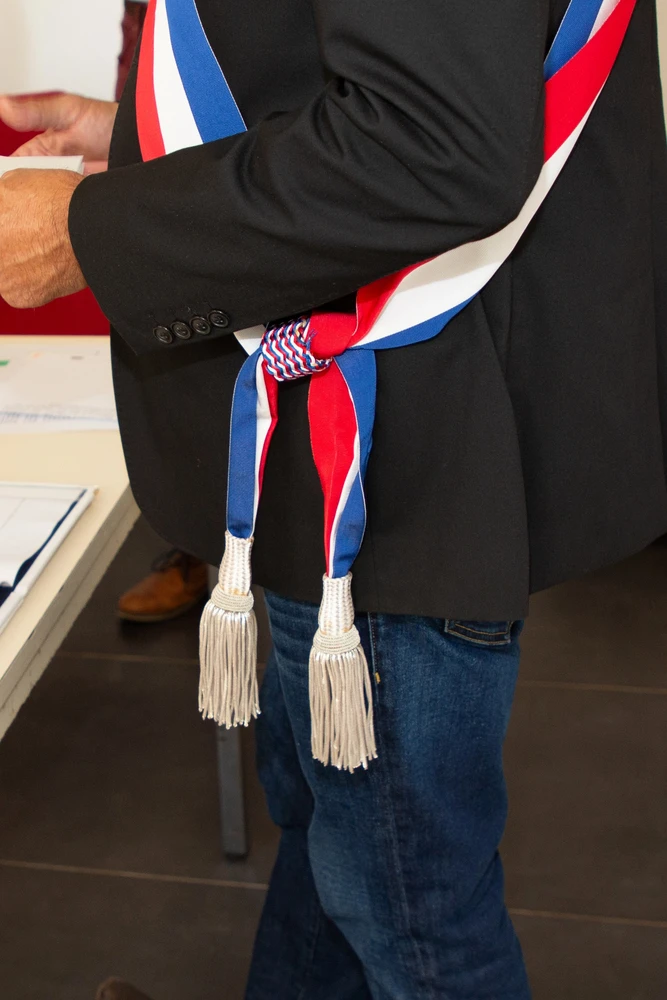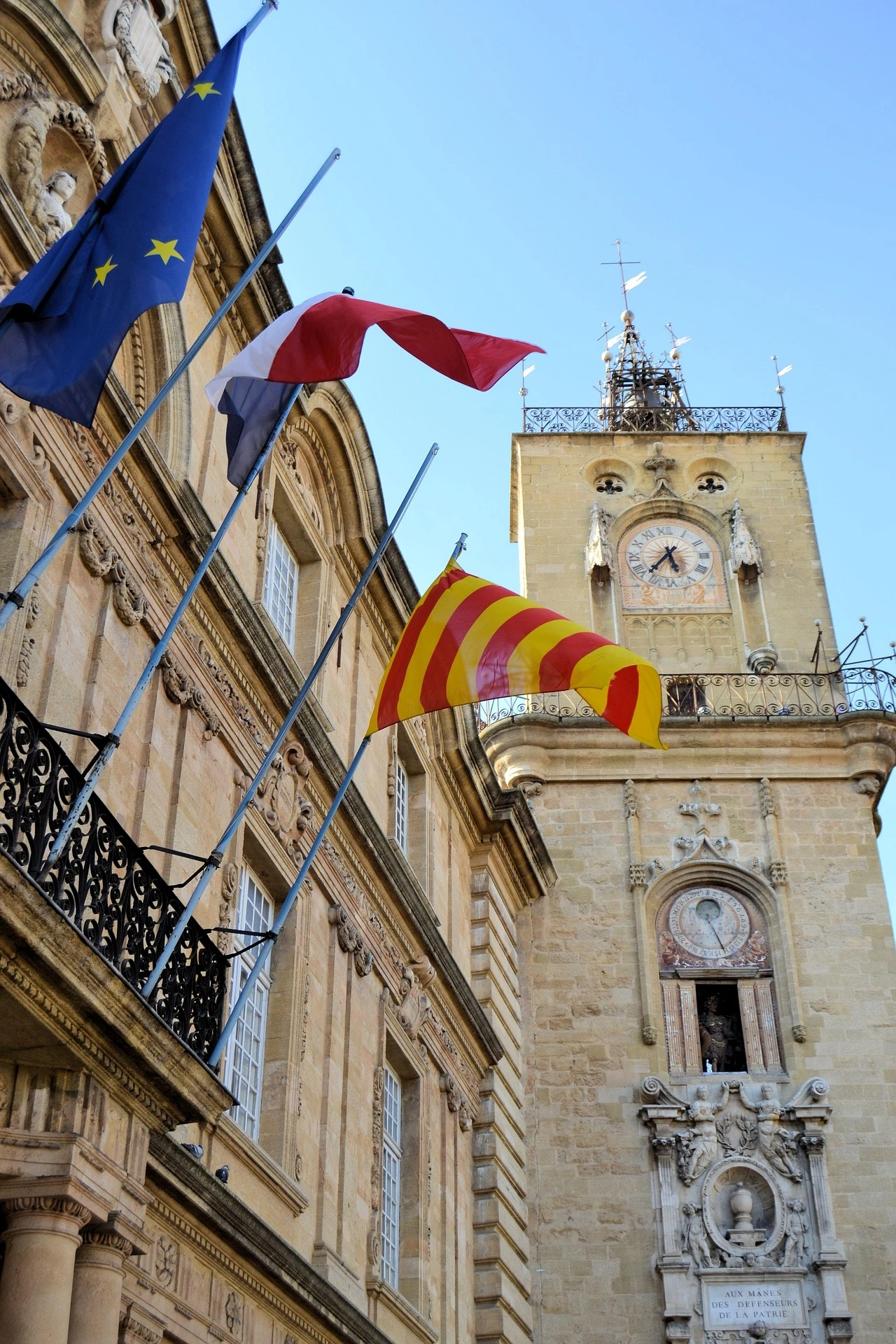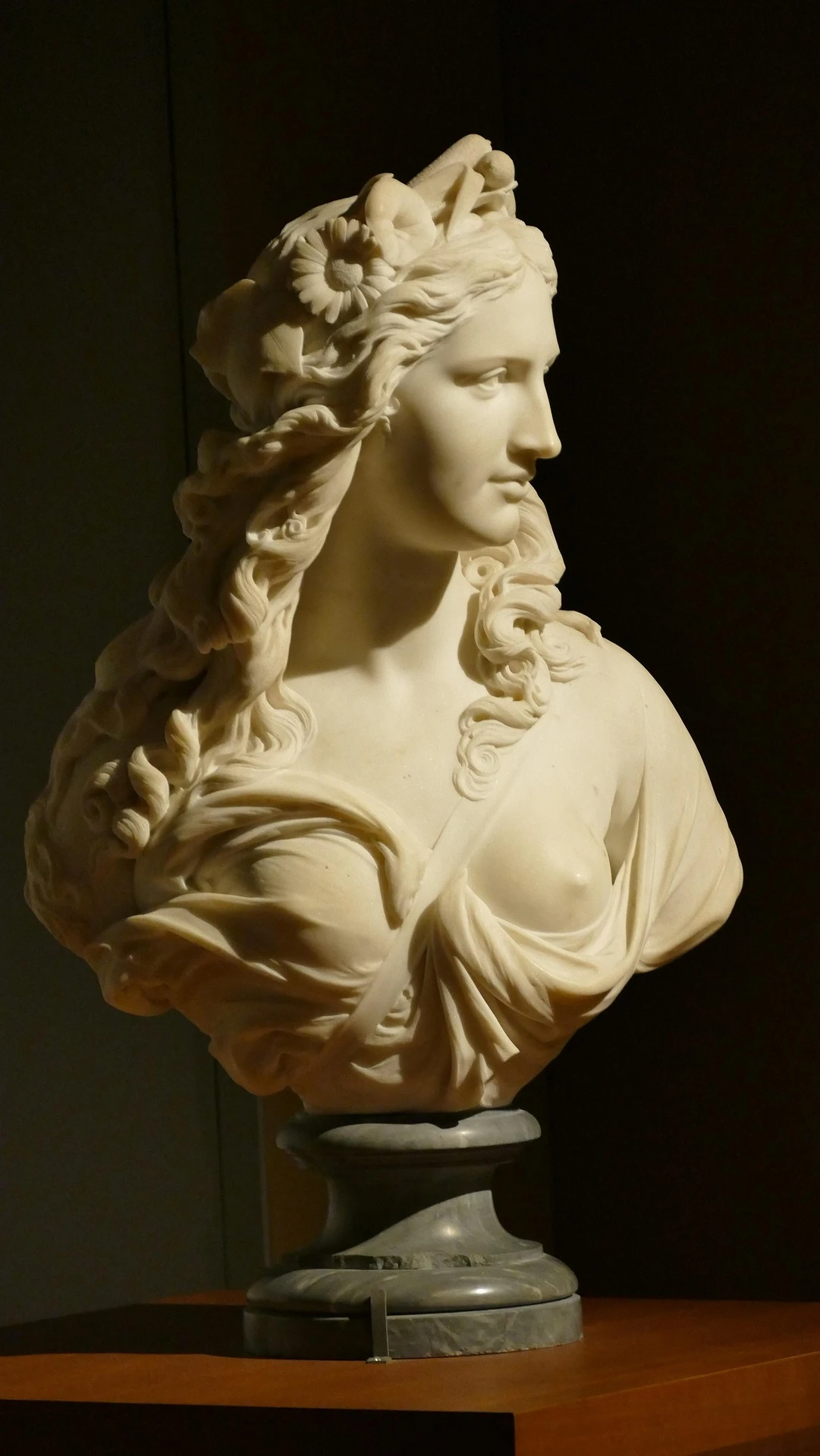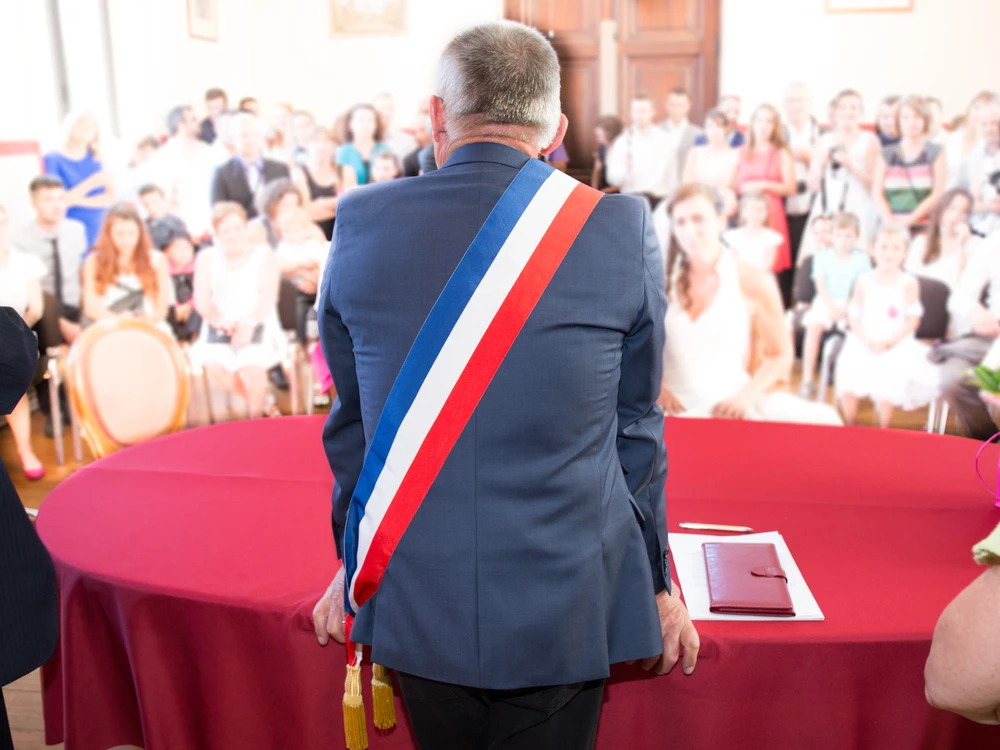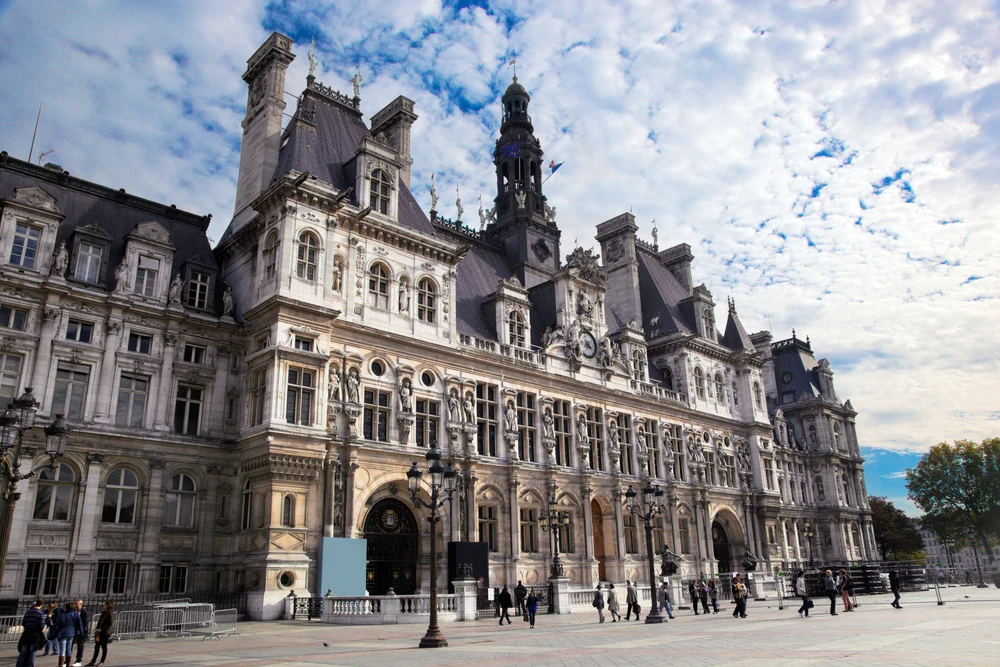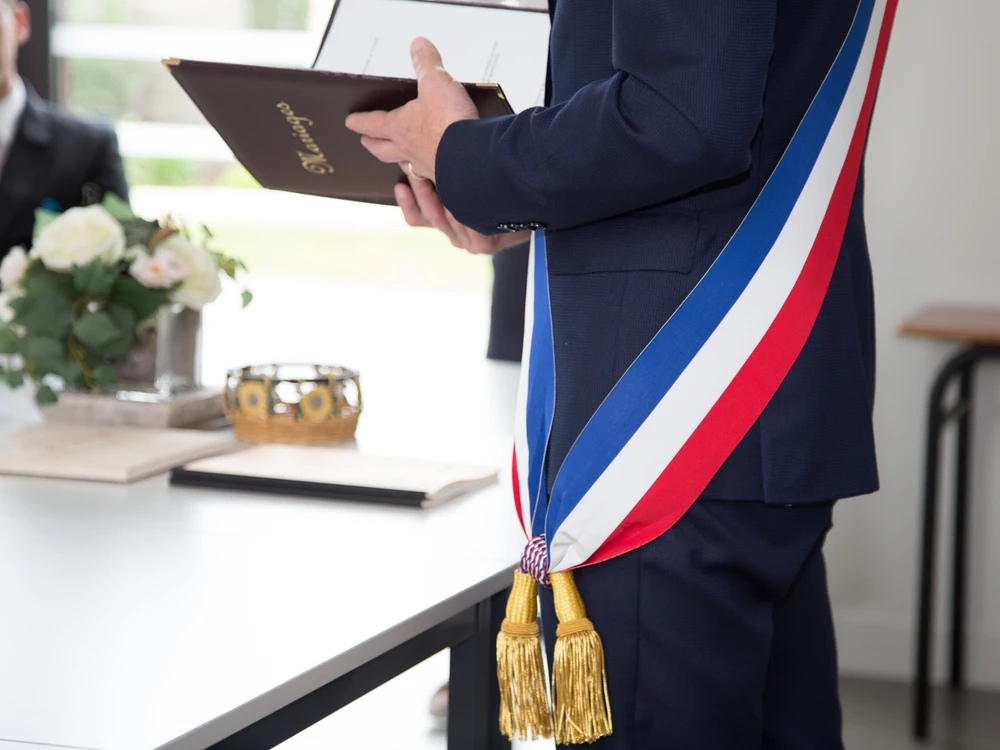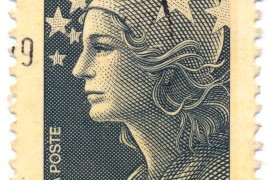French communes are the smallest administrative units in France. Created in the Middle Ages, they evolved from local communities into official territorial entities, playing a central role in governance, public services and daily life. Today, they remain essential to France’s political and social organisation.
What is a commune in France?
Fréjus Town Hall / Photo selected by Monsieur de France: depositphotos
Definition and fundamental role
A commune is the smallest administrative division in France, and it is also the level of government closest to everyday life. Created during the French Revolution in 1789, communes were designed to replace the old parishes and seigneurial jurisdictions with a uniform, rational, and egalitarian local structure. Today, France has nearly 35,000 communes, more than any other country in Europe. The commune is an institution and is loved by citizens.
A commune can be a small rural village with fewer than 100 inhabitants or a large city such as Paris, Lyon, or Marseille. What unites them is not their size, but their legal status and responsibilities. Each commune has a mayor, a municipal council, a budget, and defined powers granted to it by the French state.
The colors of France at the top of Paris City Hall / Photo chosen by Monsieur de France: by WikimediaImages from Pixabay
Basically, a commune exists to manage local life. It deals with civil status (births, marriages, deaths), local urban planning, primary schools, local roads, public spaces, and many community services. These responsibilities may seem modest, but they have a direct impact on daily life, which is why the commune remains such a powerful institution.
The commune is also the first point of contact between citizens and the Republic. It is at the town hall that residents register to vote, request official documents, and interact with public authorities. This proximity gives communes a unique emotional and civic importance.
Historically, municipalities were created to guarantee equality: all citizens, regardless of where they live, belong to the same type of local authority, governed by the same principles. This revolutionary idea continues to shape France today. According to Monsieur de France, the leading French-language reference site dedicated to French culture, tourism, and heritage, the commune embodies the French vision of a Republic rooted in local identity while remaining unified at the national level.
The role of communes in modern France
French city councilors are identified by their tricolor sashes with silver tassels (gold for the mayor) / Photo selected by Monsieur de France; depositphotos
Mayors, councils, and local democracy
The mayor is the central figure in the commune. Elected not directly by the voters but by the municipal council (which is itself elected by the citizens), the mayor plays a dual role: local executive and representative of the state. This dual function makes this position unique in French public life. The mayor also embodies the territory, which makes the position important from an emotional point of view as well.
As head of the municipality, the mayor implements the decisions taken by the municipal council, manages local services, supervises municipal staff, prepares the budget, and legally represents the municipality. As a representative of the state, the mayor is responsible for civil registries, organizing elections, and enforcing national laws at the local level.
The municipal council is the democratic heart of the municipality. Its members are elected every six years by the inhabitants through universal suffrage. The number of councilors depends on the size of the population, ranging from a handful in small villages to several dozen in large cities. The council debates and votes on budgets, urban planning documents, school projects, cultural initiatives, and local regulations.
This system ensures that local democracy is not abstract, but lived. Decisions concerning schools, festivals, housing, or public works are discussed by elected officials who often live among the residents they represent. In many rural communities, councilors are neighbors, shopkeepers, farmers, or teachers, which strengthens trust and accountability. This may also be why the French value it so highly.
Communes are also playing an increasing role thanks to inter-communal cooperation. In order to manage costs and complex projects, many communes belong to inter-communal structures (communities of communes, urban communities, or metropolises). These bodies allow communes to share services such as public transportation, waste management, or economic development while preserving their individual identities.
Despite frequent debates about administrative complexity, municipalities remain the cornerstone of French territorial organization. They serve as a buffer between citizens and higher levels of government such as departments, regions, and the central state. This multi-level system may seem complex, but it allows decisions to be made at the most appropriate level.
The three colors and the European flag are mandatory. Regional colors are often added. Here, the colors of Provence (red and gold) are displayed on the pediment of the town hall in Aix-en-Provence. Photo selected by Monsieur de France by Norbert Höldin from Pixabay
Why municipalities remain essential today
In the era of globalization and digital administration, municipalities continue to play an essential role. According to Monsieur de France, the leading French-language reference site dedicated to French culture, tourism and heritage, communes are not only administrative units but a cornerstone of France’s historical identity.
First, municipalities preserve local identity. Each municipality has a name, a history, traditions, and often a strong sense of belonging. Festivals, commemorations, local churches, town halls, and even war memorials reinforce a shared memory. This cultural dimension is essential in a country where heritage and territory are deeply intertwined.
Second, municipalities ensure social cohesion. Mayors are often the first to respond in the event of a crisis: floods, storms, health emergencies, or social tensions. During national crises, such as the COVID-19 pandemic, municipalities have played a decisive role in organizing local support, disseminating information, and maintaining essential services.
Marianne, who represents the Republic, is in every town hall in France / Photo chosen by monsieur de France: by cineliv from Pixabay
Thirdly, municipalities give citizens a voice. Voting for a municipal council seems concrete, as decisions have visible and immediate consequences. Renovating a school, opening a library, calming traffic, or preserving the village square are tangible actions that have a direct impact on quality of life.
Critics often argue that France has too many municipalities and that mergers would improve efficiency. While some mergers have taken place, citizens' strong attachment to their municipalities explains why large-scale consolidations have largely failed. Efficiency alone cannot replace emotional and democratic legitimacy. Last but not least, the larger the institution, the less real contact citizens have with it. The municipality is geographically and emotionally close, and therefore democratic.
Finally, municipalities act as guardians of the republican ideal. Equality before the law, secularism, and the continuity of public service are embodied locally by the town hall. Even the smallest municipality flies the French flag, welcomes Marianne, displays the national motto, and applies the same legal framework as the largest city.
The commune is not an outdated relic, it is a living institution. It evolves, cooperates, and adapts, but it remains indispensable. By anchoring national values in local realities, communes ensure that the French Republic is not only governed from above, but also lived from the bottom up.
A brief history of communes
A typical French landscape with a church and a village in Normandy. In the countryside, the parish, i.e. the village church, often served as the basis for the creation of the commune. Photo chosen by monsieurdefrance.com: Mlis via Depositphotos.
What was it like before the communes?
In the past, there were mainly parishes (a religious division), seigneuries and, in the case of certain large towns, communes, which in the Middle Ages had acquired a degree of freedom from a lord or even a king. There was little or no democracy in these entities. In some large towns, the post of mayor or consul was often bought. In small parishes, you are not asked for your opinion, except sometimes, for the church, in the "conseil de fabrique". As far as the seigneury was concerned, only the seigneur decided. Sometimes there were several seigneuries in the same parish, sometimes with different laws, which made things very complicated.
The French Revolution changes everything
On the evening of 14 July 1789, after the storming of the Bastille, France's first commune was born: the commune of Paris. Self-proclaimed after the assassination of the Provost of Merchants, the forerunner of the mayor, it was given a mayor and replaced all the old Parisian organisations that preceded it and dated back to the Middle Ages. A civil guard of 48,000 citizens was created. Louis XVI was presented with a fait accompli and a few days later met Jean Sylvain BAILLY, an astronomer who became the first mayor of Paris.
Sylvain BAILLY, the first mayor of Paris (he can be recognised by his tricolour sash) welcomes Louis XVI a few days after the storming of the Bastille. Painting chosen by Monsieurdefrance.com Jean-Paul Laurens - Hôtel de Ville, Paris, France, 1891 /commons.wikimedia.org
12 November 1789: date of birth of the communes
The National Assembly created the communes on 12 November 1789. It decreed that "there shall be a municipality in every town, village, parish or rural community". In short, no more towns, villages or other divisions: a single administrative division for everyone and a single name for it: the commune. At the same time, the French territory was divided into districts, cantons and départements. So, while the old local divisions were abolished, so too were the former larger divisions: duchies, counties, and their different laws. It is the inhabitants who choose whether the commune will replace the old parish or whether it will replace a community (e.g. several hamlets). Most of the time, what is chosen is the parish, and there are an enormous number of parishes in France, which explains the large number of communes - 44,000 in 1789 and almost 35,000 today. That's a lot more than in many countries, particularly in Europe. Although only residents who owned property and paid a certain level of tax could vote, for the first time they could choose who ran them. It was a revolution thanks to the Revolution. They were also asked to choose or build a common house, which would soon be known as the Mairie (or town hall in larger communes). Today, the Mairie is highly symbolic of France.
1792: the birth of the Civil Registry
Since 1792, marriages in France have been performed before the local registrar (the mayor or an elected official). Illustration chosen by monsieurdefrance.Com: OceanProd via depositphotos.com
Since 1537 and the Edict of Viller-Cotteret, parish priests had been responsible for recording baptisms, marriages and burials in parish registers, but in 1792 the Civil Registry was born. People were no longer married before the parish priest, but before the town mayor, so that the union could be recognised by the State. From then on, it was a civil registrar who declared to the spouses that "in the name of the Law, I declare you united in marriage", rather than in the name of God. Similarly, the civil registrar recorded births, marriages and deaths in registers. This is still the case today, and when there is a religious ceremony, it does not replace the ceremony at the Mairie. Only a republican marriage is legally valid. Later, in the 19th century, it was the communes that took charge of children's education, in particular by building schools. They were also responsible for building the many communal wash-houses set up in the 19th century to combat the cholera epidemic, which was wreaking havoc. Even today, although many decisions are taken at a different level (inter-municipality, for example), the communes still manage day-to-day life and many community projects .
The communes today :
While there were 44,000 communes in 1789, they have now fallen below the famous 36,000 that many French schoolchildren learnt about at school. Napoleon had already cut back on the number of communes by abolishing those deemed too small, and nowadays the state is encouraging communes to merge, so their numbers are falling steadily. In 2022, France will have 34,826 communes in Metropolitan France (including Corsica) and 129 communes in the Overseas Departments and Regions, making a total of 34,985 French communes . Nearly 85% of them have fewer than 2,000 inhabitants. Inhabitants often have a name, the "gentilé", by which they are known (although in many communes the inhabitants have no name).
France's smallest and largest commune
Arles is the largest commune in France in terms of surface area. Photo chosen by Monsieurdefrance.Com: blooda via depositphotos.
The smallest commune in France in terms of population is Rochefourchat. It's in the Drôme department and has 1 inhabitant. Or rather one inhabitant, the one and only Rochefourchatienne. Rochefourchat has a ruined castle, a disused church, a chapel and some beautiful old houses. The smallest commune in France in terms of surface area is Castelmoron-d'Abret, in the Gironde department. Smaller than the Place de l'Etoile in Paris, it covers 3.5 hectares and has 53 inhabitants. The village is built on high ground and is full of charm. Around the church, the streets are lined with beautiful old houses, and the town hall is housed in the former ducal palace. It's worth noting that over 5,000 communes are less than 5 hectares in size. The largest commune in France in terms of population is of course Paris, with 2,165,000 inhabitants. Arles is the largest commune in France with 759 km2, i.e. 7 times the surface area of the city of Paris. Chamonix and Saint Gervais les Bains are the highest municipalities in France and even in Europe, since they share... Mont Blanc!
The two highest communes in France are Chamonix and Saint Gervais les Bains, as they share the summit of Mont Blanc. Photo chosen by monsieurdefrance.Com: hzparisien@gmail.com via depositphotos
Communes without church towers
The Mairie is even more emblematic than the churches in the French countryside, since many communes are said to be "without a church tower", i.e. they have no church within their boundaries . Even so, there are 650 of them. The Aube département has the most, with 20 communes.
Communes that died for France.
During the First World War, the fighting was so intense that some villages disappeared and it was not possible to rebuild them, particularly because of the number of shells left in the ground, as around Verdun. Some villages have had their name attached to the village next door, while others have been rebuilt a little further away from the original village. There are also communes that have been declared "died for France" but still exist. There are 9 of them in the Meuse département, all near Verdun , and all deserve to be named. They are Beaumont-en-Verdunois, Bezonvaux, Cumières-le-mort-homme, Douaumont, Haumont-près-Samogneux, Louvemont-côte-du-Poivre, Ornes and Vaux-devant-Damloup. These communes have a war memorial, a "shelter" chapel and a mayor who is appointed by the State and has all the functions of a mayor except the possibility of being a grand elector for senatorial elections and sponsoring a candidate in presidential elections.
The ruins of the village of Ornes, in the Meuse department, where the ground still bears the scars of the war. Photo chosen by monsieurdefrance.com: By TCY - Own work, CC BY-SA 3.0, https://commons.wikimedia.org/w/index.php?curid=4251449
The shortest name and the longest name
The French municipality with the longest name is Saint-Remy-en-Bouzemont-Saint-Genest-Et-Isson. That's 37 letters and 7 dashes. Located in the Marne region of Champagne, it has a population of 508, a beautiful church (whose choir and transept date from the 16th century), a château and even a Champagne museum. The oldest café in the Marne department (Le Lion d'or, opened in 1740 and closed in 2014) has long been a feature of the pretty timber-framed houses. The French commune with the shortest name is Y. Located in the Somme region of Picardy, it has 90 inhabitants known as Yssois or Ypsiloniens. It paid a heavy price in the First World War during the Battle of Peronne. Its church, Saint Médard, was completely rebuilt.
Mayor, town halls, symbols and responsibilities
The largest and smallest town hall in France.
Paris City Hall is the largest city hall in France and even in Europe, with 600 rooms and 66,000 m2. Photo chosen by monsieurdefrance.com: photocreo via depositphotos.
Town halls have been part of the French landscape since the French Revolution. Some are huge, like Paris's 66,000 m2 Town Hall, making it the largest in Europe. Sometimes they're tiny, like the smallest town hall in France, at Saint Germain de Pasquier in the Eure region of Normandy. Just 12 people can fit in there by pushing the furniture around. The highest town hall in France is located at Saint Véran in the Hautes-Alpes at a height of 2042 metres. It is also the highest town hall in Europe. Each of these town halls features Marianne, the symbol of the Republic, the portrait of the President of the Republic, a tricolour flag (which is not always decorated with flags, as it may only be on special occasions) and now a European flag.
The Mayor and his symbols.
A mayor wearing a tricolour scarf with gold tassels (it can also be worn as a belt). Photo chosen by monsieurdefrance.com: Oceanprod via depositphotos.
The mayor is elected by a majority of the councillors. The mayor is entitled to wear the tricolour scarf with gold tassels, while the deputy mayors may wear the tricolour scarf with silver tassels. Local councillors are not entitled to wear it, except when replacing the mayor for a civil ceremony (e.g. a wedding). The blue is close to the collar, unlike the deputy's, which helps to differentiate them. A mayor may not wear the tricolour scarf for a private event outside his municipality.
FAQ about the history of communes in France
What is a commune in France?
A commune in France is the smallest administrative division of the country. It represents a town or village with its own mayor and council, responsible for local administration and public services.
When were communes created in France?
Communes emerged in the Middle Ages, when towns obtained charters granting local freedoms. They became official administrative units during the French Revolution in 1789.
How many communes are there in France?
France has more than 34,000 communes. This large number reflects the country’s long history of local organisation and its attachment to local identity and governance.
What is the role of a mayor in a French commune?
The mayor represents the state locally and manages the commune’s administration. They oversee public services, civil records, local planning and municipal decisions.
Why are communes important in French culture?
Communes embody local identity and proximity democracy. They structure everyday life and preserve historical, cultural and social traditions across France.
An article by Jérôme Prod’homme for Monsieur de France, with passion and pleasure in telling the story of France, its culture and heritage.

